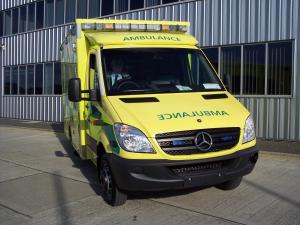- Group home
- You must register/login in order to post into this group.
Greening the Front Line Vehicle Fleet

By: South East Coast Ambulance Service NHS Trust
real contribution to climate change that can be measured, good pr, feel good factor.
Minimum of 30 metric tonnes (Estimated)
As a major user of transport, SECAmb has a vested interest in reducing harmful C02 emissions. The front line fleet of A&E Services ambulances and rapid response cars cover some 10,000,000 miles per year in responding to patient incidents and the Trust has, therefore a vested interest in doing all that it can to reduce the effect of harmful emissions whilst, at the same time, ensuring that patient safety is not compromised. Manufactures of vans are (not yet) required to publish vehicle emissions data although we know that they are cleaner year-on-year. However, we understand that lighter weight is another route to reducing emissions. Working with vehicle converters we have, therefore, achieved a 2.5% weight reduction in the latest batch of ambulances. Since 2007 we have replaced or have in the pipeline some 156 new ambulances and will have phased out 154 dirty (from an emissions perspective) older ambulances. SECAmb will have updated some 55% of its front line A&E ambulance fleet in 3 years with lighter and cleaner vehicles.
For its rapid response cars the Trust has standardised on a vehicle with a good power/weight/emissions ratio but does keep this under review. Some 73 new vehicle have been, or are in the process of being introduced into service and the numbers reflect the growing move toward the front loaded model of service delivery where an appropriate response will be made to each call rather than just send an ambulance. Thus the numbers of dirty ambulances can be reduced. The new vehicles will replace a number of older petrol and diesel engined cars that will be phased out of service. Over the life cycle of these new vehicles we estimate that we will see a 201 (15.0%) metric tonne reduction in C02 emissions.
Across the Trust operational area of Kent, Sussex, Surrey and North East Hampshire
To reduce CO2 emissions, resource consumption and costs
vehicle manufacturers and converters.
Annual recvision of the fleet strategy,; working with manufacturers and converters to reduce the life cycle CO2 footprint.
Trust Fleet Strategy
